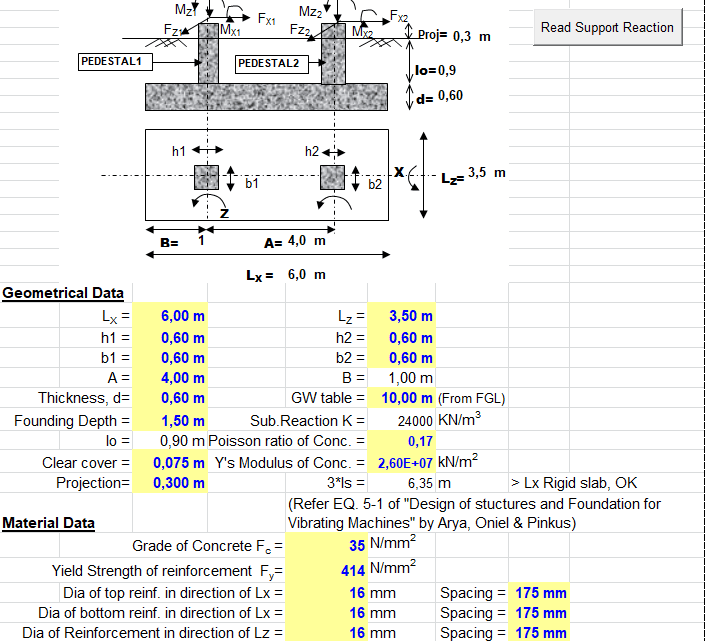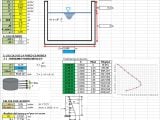
Combined Foundation for Pipe Rack Spreadsheet
10 May 2025Table of Contents
Combined Foundation for Pipe Rack Spreadsheet
A combined foundation is a type of structural foundation that integrates multiple foundation methods, typically isolated footings and raft (mat) foundations, or pile foundations with raft slabs. This approach is used when the load from columns is too heavy for individual footings or when spacing between columns is too tight for independent footings.
This fusion allows better load distribution, structural stability, and cost-effectiveness in challenging soil or load conditions.
Why Choose a Combined Foundation?
Here are the top reasons combined foundations are becoming increasingly popular in construction:
1. Load Distribution Efficiency
Combined foundations allow loads from multiple columns or structures to be spread across a wider area, minimizing settlement and stress on the soil beneath.
2. Adaptability to Soil Conditions
Poor or uneven soil conditions often make traditional footings impractical. By combining deep foundations like piles with surface-level mats, engineers can adapt to varying soil profiles.
3. Support for Irregular Structures
Buildings with uneven layouts or variable loads require custom foundation solutions. Combined foundations offer the flexibility needed to accommodate unique architectural designs.
4. Cost Optimization
While initially more complex, combined foundations often reduce material and excavation costs in the long term by optimizing support where needed most.
Types of Combined Foundations
Combined Footing Foundation
This involves connecting two or more columns with a shared footing slab, especially when their footings would otherwise overlap or be too close.
Pile-Raft Foundation (Hybrid Foundation)
A modern favorite in high-rise construction, this system combines the surface area of a raft with the depth and load capacity of piles. The raft distributes the load horizontally, while the piles handle vertical stress.
Strap Foundation (Cantilever Footing)
Used when one column is near a property line, it connects the footing of that column to another via a strap beam, distributing the load effectively without overstepping boundaries.
When to Use a Combined Foundation
You should consider using a combined foundation when:
-
Soil bearing capacity is inconsistent
-
Structures have heavy or unbalanced column loads
-
Footings would otherwise overlap
-
There’s limited construction space
-
You’re working with sloped terrain or flood-prone areas
Key Benefits of Combined Foundation Systems
-
Improved Structural Integrity
-
Reduced Differential Settlement
-
Enhanced Load Management
-
Better Performance in Earthquake Zones
-
Sustainability Through Efficient Material Use
Design Considerations for Combined Foundations
Designing a combined foundation requires careful structural analysis, including:
-
Load analysis (dead load, live load, wind, seismic)
-
Soil investigation reports
-
Column spacing and alignment
-
Cost vs. performance analysis


